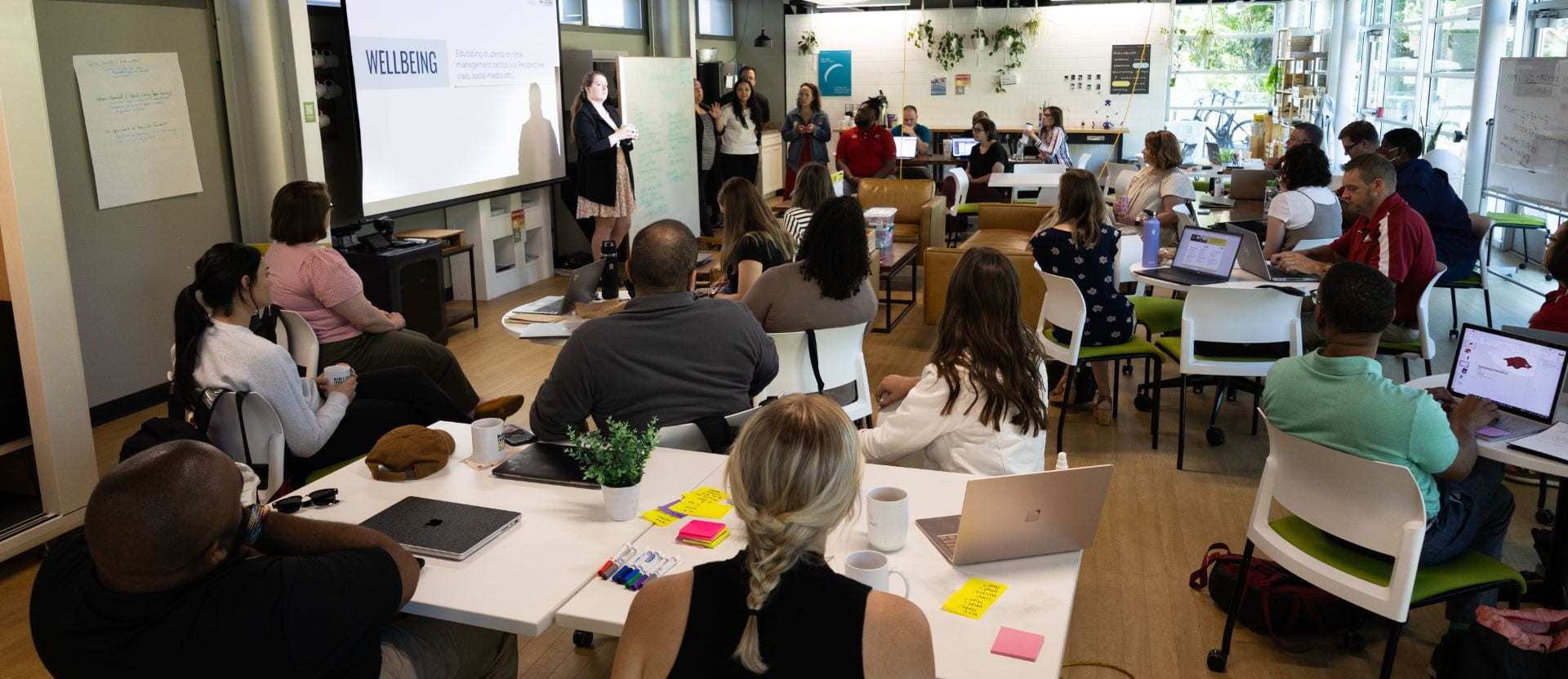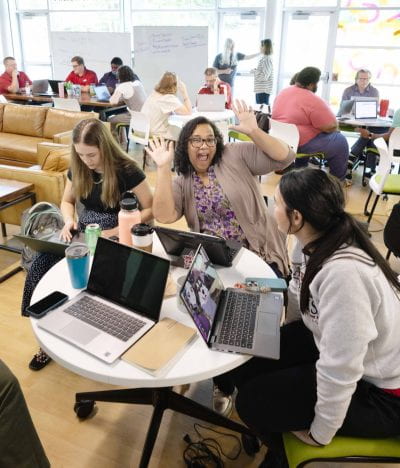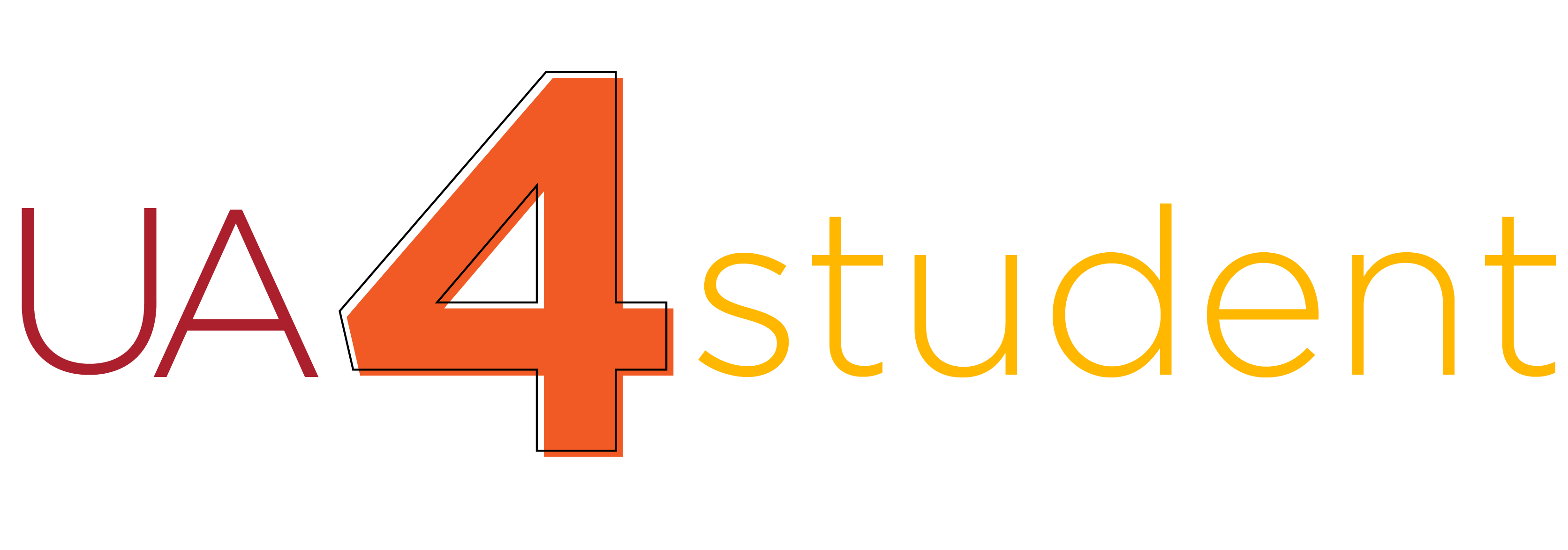
The Division of Student Affairs is working with two groups on both long term and short term planning to create better efficiencies and increase effectiveness of our programs and services to help students succeed.
The Human-Centered Design Approach
The Division of Student Affairs sought out the McMillon Innovation Studio to facilitate Human-Centered Design Workshops (HCDW) to aid in planning for this school year. Over three days in June, participants from various Student Affairs departments identified problems and created possible solutions designed to help students succeed.
“In order to help set our 2023-2024 priorities, we partnered with the McMillon Innovation Studio and used the Human-Centered Design method to identify where we should focus our time and efforts,” said Jeremey Battjes, vice chancellor for Student Affairs. “Participants brainstormed existing issues, identified themes, and then worked in teams to design solutions.”
The McMillon Innovation Studio describes Human-Centered Design as a creative approach to solving problems. It is different from other approaches because of its obsessive focus on understanding the perspective of the person who experiences a problem or has an unmet need. The goal of Human-Centered Design is to keep the end user in mind throughout the entire creative process.
Working with the McMillon Innovation Studio, Student Affairs staff identified student success barriers and brainstormed solutions in six priority areas:
- Student belonging
- Well-being
- Collaboration/communication
- Financial assistance
- Student employment
- Affordable housing
Each group concentrated on bringing one of their solution ideas to fruition for wider discussion in the Division and possible implementation.
“I enjoyed participating in the HCDW as a process that brought folks together from across the Division,” said John Shaffer, assistant vice chancellor for University Housing. “It was an excellent way to gather people who may not otherwise have worked together to identify, and then purposefully engage in implementing solutions for moving the Division forward.”
“The HCDW promoted effective collaboration across our Division which allowed our group to make quick, data-informed decisions in regard to improving on-campus student employment,” said Teah-Marie Bynion, director of analysis and reporting for Student Affairs. “As a result, we were able to better understand the needs of our students and implement solutions that we feel our students will soon benefit from as they are currently being addressed.”
The question of how to make our campus employment opportunities more enticing and how to connect students with those opportunities was key for the student employment group. One of the ideas of that group was to create a full-time position for an associate director of on-campus student employment to help connect students with employment opportunities.
“This idea has already been implemented,” Battjes said. “We created the position and found the right person for the job in Cecilee Essary.”
 Another idea that came about was for a Motivation Station to help students with time management skills. This team learned about a new initiative coming out of Wellness that utilizes an “8 for 8” booklet, helping students set goals and reflect on all aspects of their wellbeing. This is a potential opportunity for collaboration.
Another idea that came about was for a Motivation Station to help students with time management skills. This team learned about a new initiative coming out of Wellness that utilizes an “8 for 8” booklet, helping students set goals and reflect on all aspects of their wellbeing. This is a potential opportunity for collaboration.
“I’m very grateful for the (HCDW) experience,” said C.J. Mathis, director of multicultural center retention programs. “I believe the scheduled, devoted time to think, be creative, and engage with various colleagues provided me the opportunity to put things that have been randomly living in my head into a format that people can understand, make adjustments, and begin to implement where appropriate. I’m very much looking forward to see how these ideas and others will push our division forward in contributing to student success.”
Mathis was in the group that worked on financial assistance – how to assist students having financial struggles with paying tuition so that their wellbeing is improved leading to a more positive college experience. The idea came up to create a payback program for students to be able to work on campus and receive a scholarship that would close the gap on their unmet financial needs. Students would work a minimum of 10 hours a week on campus in an area that matches their employment preferences and needs of departments. This idea is currently being explored.
Discussing barriers to student success through the HCDWs helped the division identify six priorities for the academic year – student belonging, wellbeing, collaboration/communication, financial assistance, student employment, and affordable housing. The Division continues to look at all possible solutions generated and ways to implement innovations to help students succeed.
Strategic Planning with Huron Consulting
The Division of Student Affairs is also working with Huron Consulting to revise/update the mission, strategic vision, and organizational structure of the Division.
“We have not revised our mission, vision, values, and organizational structure, in several years,” said Jeremy Battjes, vice chancellor for Student Affairs. “Our goal with this process, we are calling Advancing Student Affairs, is to strategically serve our students in more effective and efficient means.”
While the University of Arkansas as a whole works towards goals and objectives for the 150 Forward Strategic Plan, the Division is working to create strategies and tactics to meet the desired objectives. Huron Consulting Group, which is already working with campus on various projects, has been engaged to help the division meet the needs of a growing and diversifying student population.
Desired outcomes of this project include:
- Having clear and unifying strategic vision, mission, and goals that center the student experience articulated through a strategic plan;
- Being intentionally aligned with the student success priorities of the University; and
- Having a student-centered organizational structure that elevates responsiveness to student needs.
The process with Huron is being conducted in 4 phases. The first phase was setting up a steering committee and making data requests; phase two is taking a current assessment of the state of the Division by conducting focus groups and individual interviews with staff and students; phase three is to develop a strategic planning framework for the Division; and phase four will be looking at possible realignments within the Division for greater efficiencies and ways to better serve students.
“We are entering phase 3 of the plan as the consultants have conducted dozens of individual interviews as well as multiple focus groups in their information gathering portion of the plan,” Battjes said.
“I think a lot of people are excited about this project, because we know it’s an opportunity to determine where we should focus our efforts over the next 5-7 years and how we should be aligned to maximize resources and collaboration,” said Erin Butler, chief of staff for the Division. “Our ability to impact the student experience and student success will be enhanced by having some specific themes to focus on. And we plan to identify metrics to help us know how we’re doing so we can adjust as needed.”
A version of this story was published in Arkansas News.
